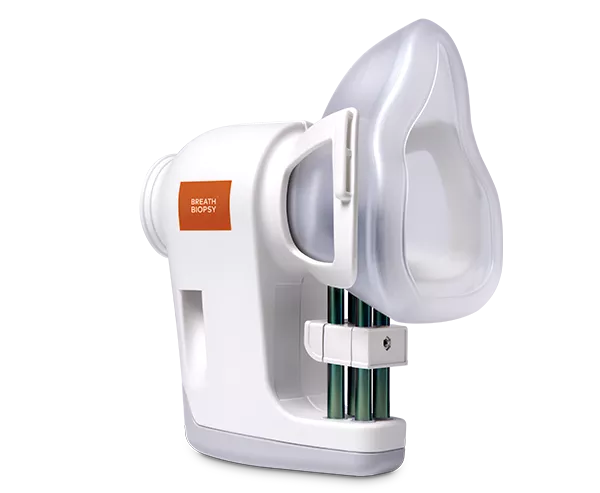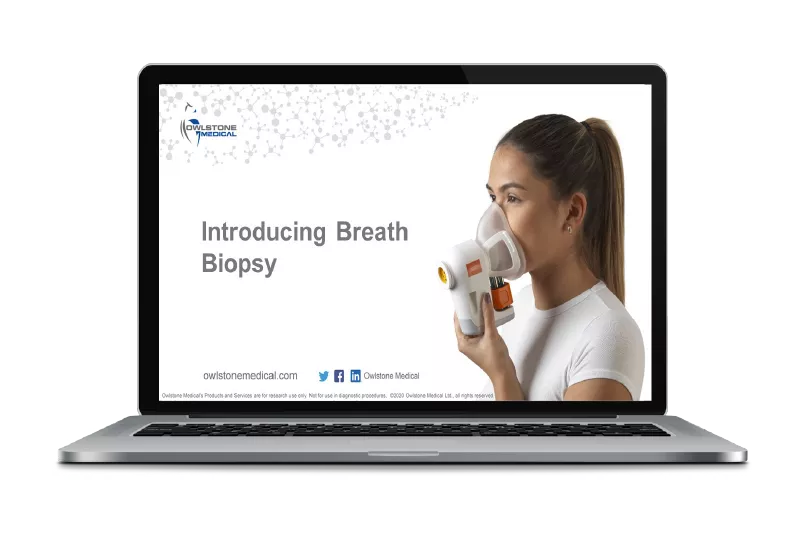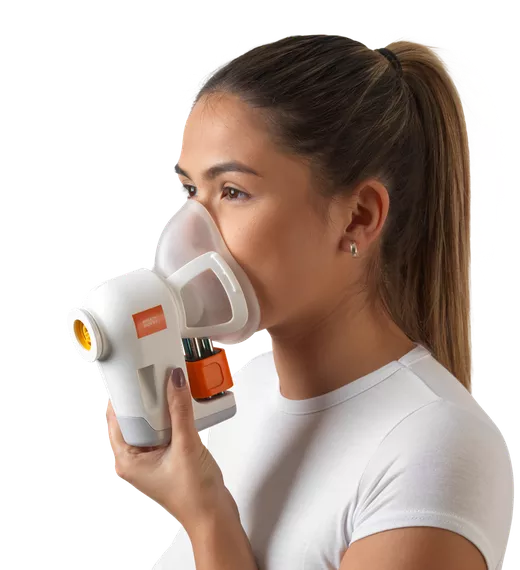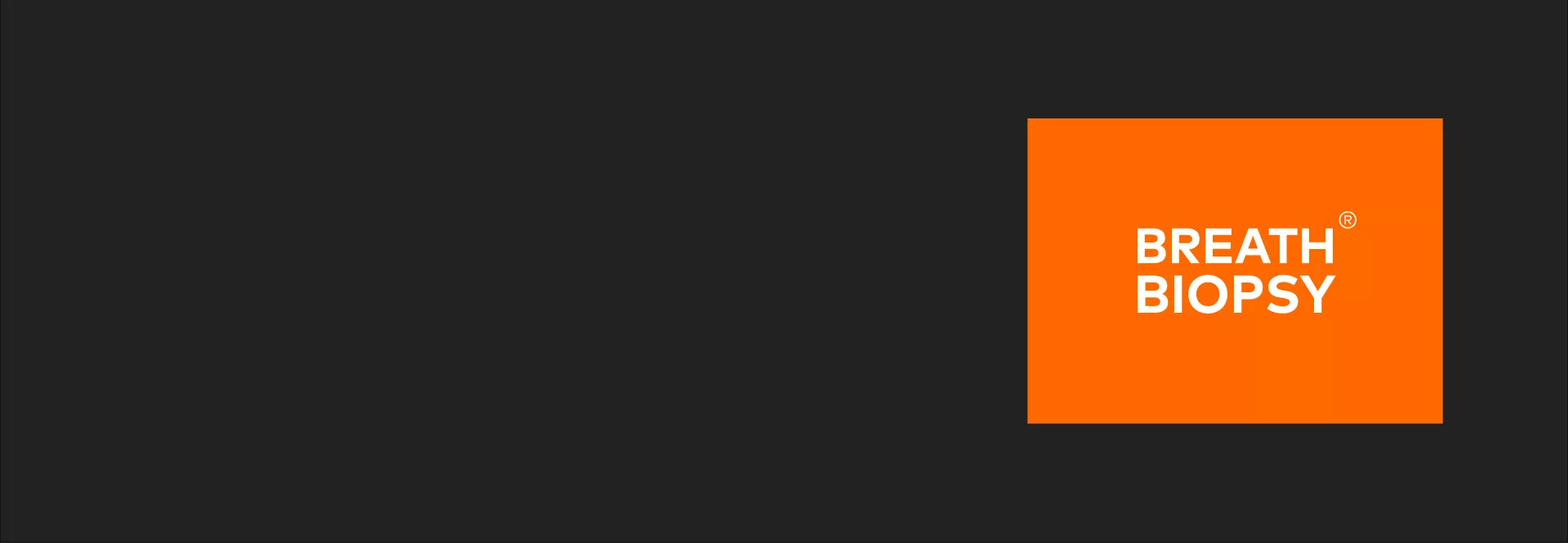
Applications of Breath Biopsy®
Exhaled breath is a vast untapped resource of biological information
INTRODUCTION
Particles Released in Breath Contain Clues to Metabolic Processes Occurring Throughout the Body
Breath contains over 1,000 volatile organic compounds (VOCs) as well as microscopic aerosol particles (also known as respiratory droplets), originating from all parts of the body. Many of these VOCs and respiratory droplets reflect metabolic activity and the state of cells and tissues, and therefore act as convenient biomarkers for a wide range of conditions. Metabolism is often one of the first things to change in the early stages of disease and so provides a useful and responsive indicator of emerging changes in health status.
Breath Biopsy® represents a non-invasive, adaptable and accessible means to detect and measure biomarkers – which are closely linked to disease activity. The clinical applications for breath biomarkers are wide ranging, with numerous applications in both precision medicine and early detection.
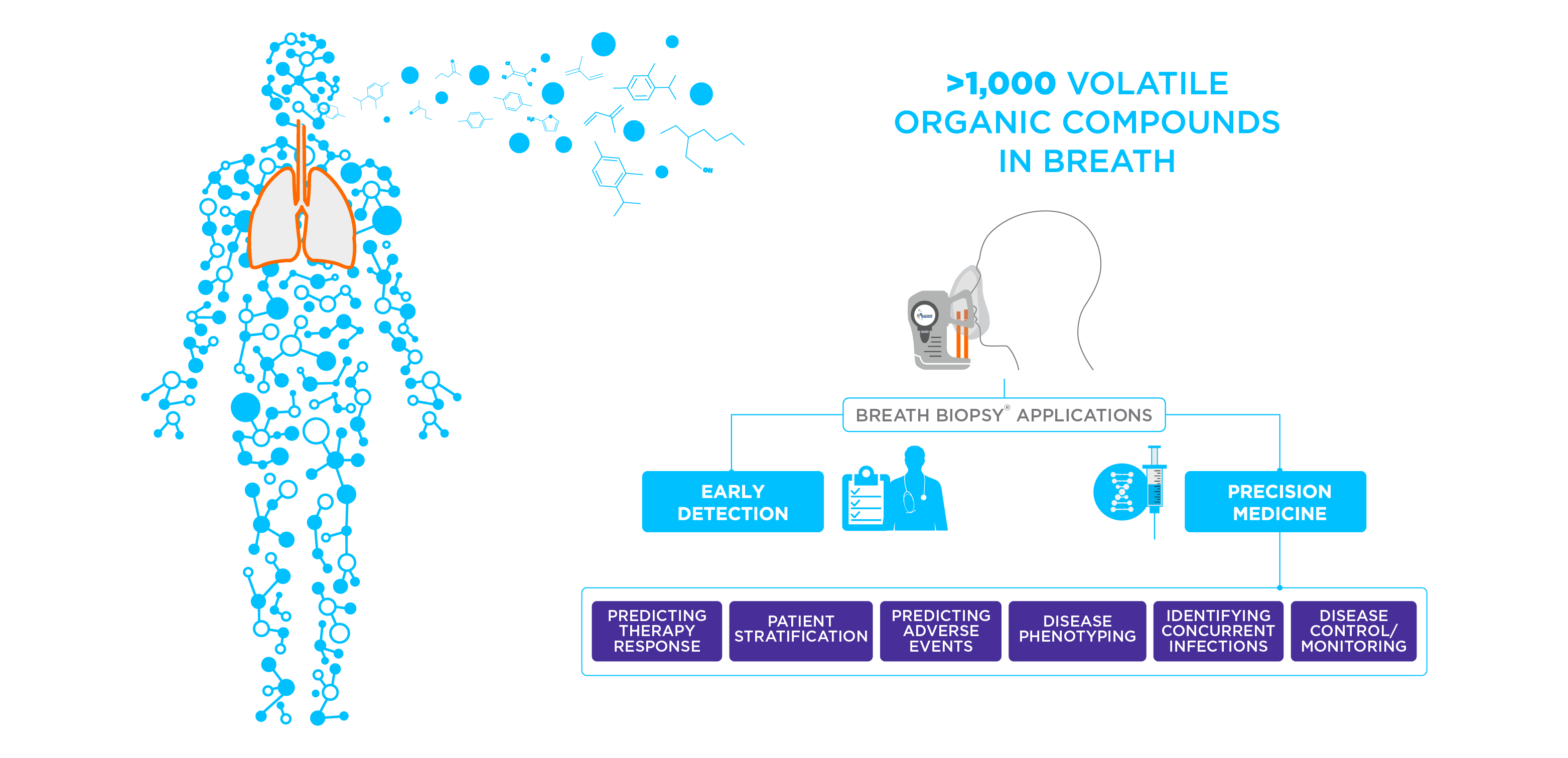
EARLY DETECTION
Diagnose Disease Sooner
At the early stages of disease, characteristic disease biomarkers are normally only present at very low levels and often go undetected – Breath Biopsy can help change this.
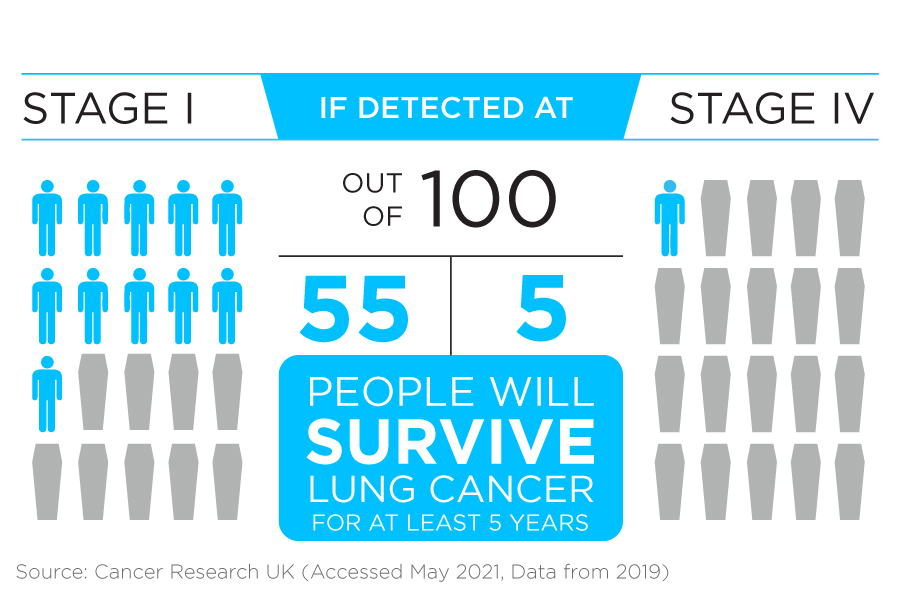
Breath Biopsy therefore has the potential to dramatically improve test sensitivity across a range of diseases, increasing the likelihood of early detection, earlier intervention and, by extension, improving long-term prognosis.
Breath sampling is completely non-invasive, whereas existing diagnostic procedures are often significantly less pleasant and carry risks – both of which can negatively affect patient compliance. Breath sampling is also suitable for use in widespread screening approaches that many other methods aren’t – such as screening that involves vulnerable groups.
Breath Review: Breath VOCs as a biomarker platform in disease areas
Read our paper highlighting the technologies developed to overcome challenges in breath analysis and updates on the use of breath analysis in various disease areas
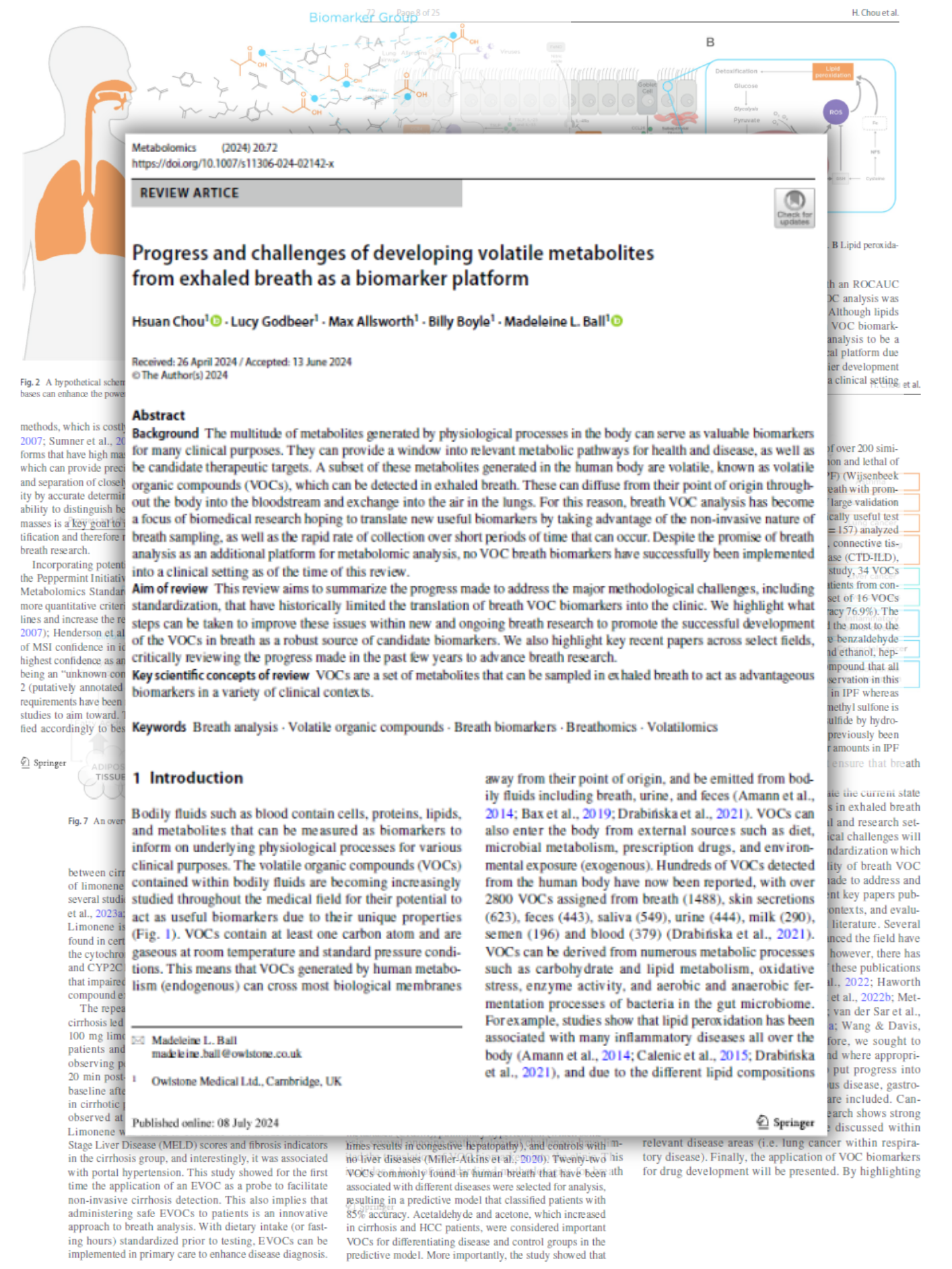
PRECISION MEDICINE
Tailor Treatments More Effectively
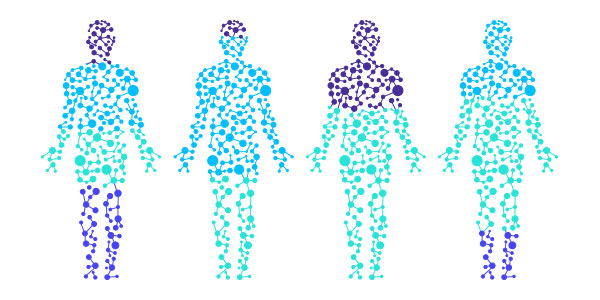
A challenge in the work to identify biomarkers in breath that our new technologies have successfully overcome is the standardizing of sampling methods and analysis. The ReCIVA Breath Sampler allows reliable and consistent collection of breath samples and the Breath Biopsy platform represents a significant advance in breath biomarker analysis.
Breath Biopsy can be applied to precision medicine in a number of clinically relevant contexts. If breath biomarkers can be identified that predict both therapy response and treatment efficacy, it could lead to the development of diagnostic breath tests for identification of responders.
Similarly, where multiple treatments are available, the use of breath biomarkers could speed the process of identifying the most appropriate therapy for each patient.
For instance, research has shown that VOCs in breath could be used to stratify asthma patients based on each patient’s immunological phenotype. Biomarkers in breath similarly offer a non-invasive way to accurately stratify inflammatory bowel disease based on distinct inflammation responses.
Measuring certain breath biomarkers, for example via EVOC® Probes, can be used to assess metabolic activities, which can be relevant to how drugs interact with a patient’s body. Therefore, Breath Biopsy has the capability to evaluate drug pharmacokinetics, which has the potential to help predict how a patient may respond to treatment. There is also evidence that these pathways may relate to drug-induced toxicity, providing advanced warning of potential side effects. We are already investigating using Breath Biopsy to assess metabolic rates for the CYP450 liver enzymes, which influence the efficacy of many common drugs.
Breath Biopsy also has applications in disease progression and treatment monitoring. Just as the early stages of disease development alter metabolism, drug treatments and disease progression also result in changes in metabolites which can be accessed via breath biomarkers.
Chronic diseases can be relatively stable for long periods of time before suddenly exacerbating. Ongoing monitoring of these diseases would allow for more effective interventions and mitigation strategies. As one example, most adult asthma patients are able to manage their condition without any ongoing treatment but still carry an inhaler for urgent interventions. Changing breath VOCs could provide an early warning of changes in the underlying disease state, when an adverse event occurs, the disease progresses or adapts to resist treatment.
| Applications in Drug Development Breath biomarkers are suitable for use in developing companion diagnostics to screen and stratify patients for inclusion in clinical trials. By selecting the patients most likely to respond to a particular therapy, this approach enables smaller and more cost-effective clinical trials. Stratifying patients also creates greater prior knowledge about the patients included in each trial. As a result, clinical trials have a better chance of success and are more likely to result in regulatory approval for therapies that are only effective for specific disease phenotypes. |
EXPOSURE
Non-invasively Monitor Hazardous Exposures
The World Health Organisation ranks environmental exposures among the top risk factors for chronic disease mortality and as a major risk factor for non-communicable diseases such as cancer. Yet, the research is limited and we have little knowledge of the many factors that contribute to disease risks.
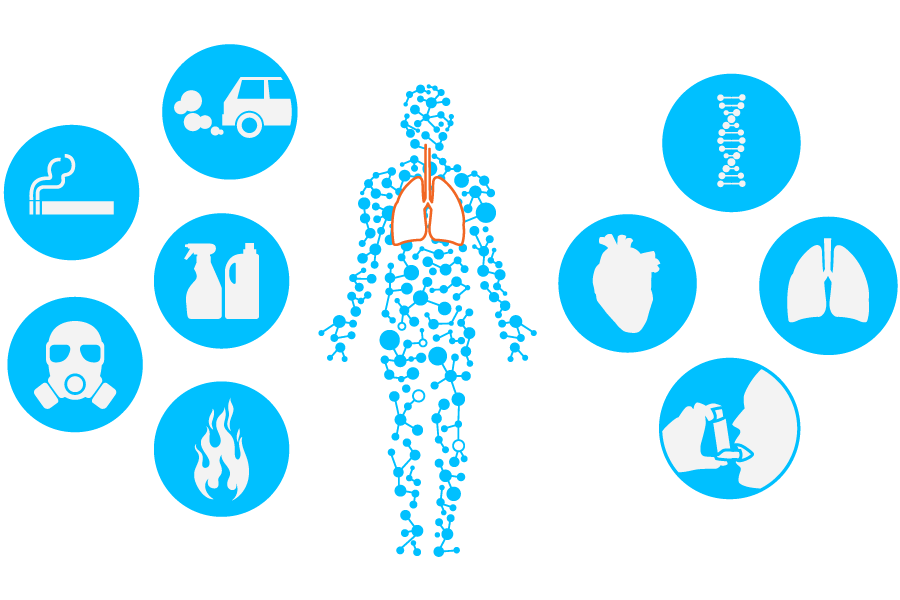
To identify the connections between environmental exposure and disease, researchers are increasingly taking an approach that involves monitoring all exposures over the course of a lifetime. These holistic studies are very long-running and therefore slow to produce results.
Breath Biopsy can help to produce meaningful results much more quickly if biomarkers are identified that act as early indicators of hazardous exposures or pre-clinical signs of elevated disease risk. For instance, Breath Biopsy can detect and measure many VOCs in breath which are commonly related to hazardous exposures at sub-part per billion concentrations (VOCs like benzene, toluene, ethylbenzene, and xylenes).
Liquid (blood) biopsies already offer direct measurements of the chemical environment in the body. However, blood sampling is invasive, which can be problematic for studies that require regular sampling. The use of invasive methods often reduces compliance in screening programs and causes particular issues in pediatrics – problems which Breath Biopsy avoids.
The ability for Breath Biopsy to sample a wide range of metabolic processes and to detect small changes that may be precursors to subsequent disease also makes it an appealing approach. The results of initial studies could lead to the discovery of breath biomarkers that are capable of identifying the very early signifiers of oncoming disease, well in advance of other detection methods.
